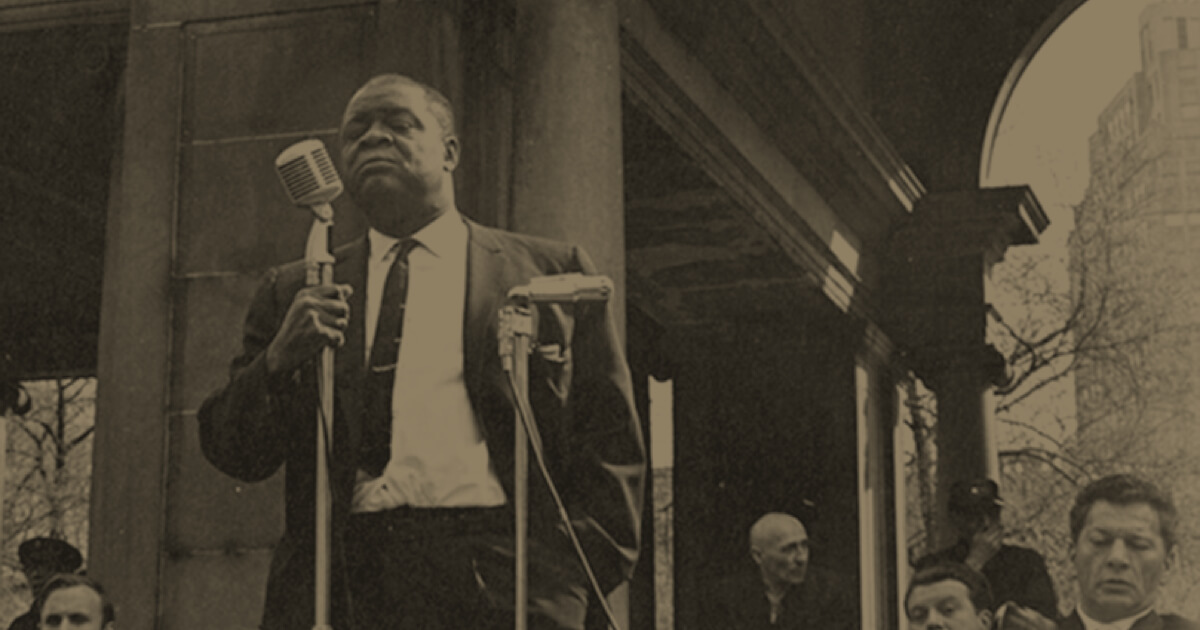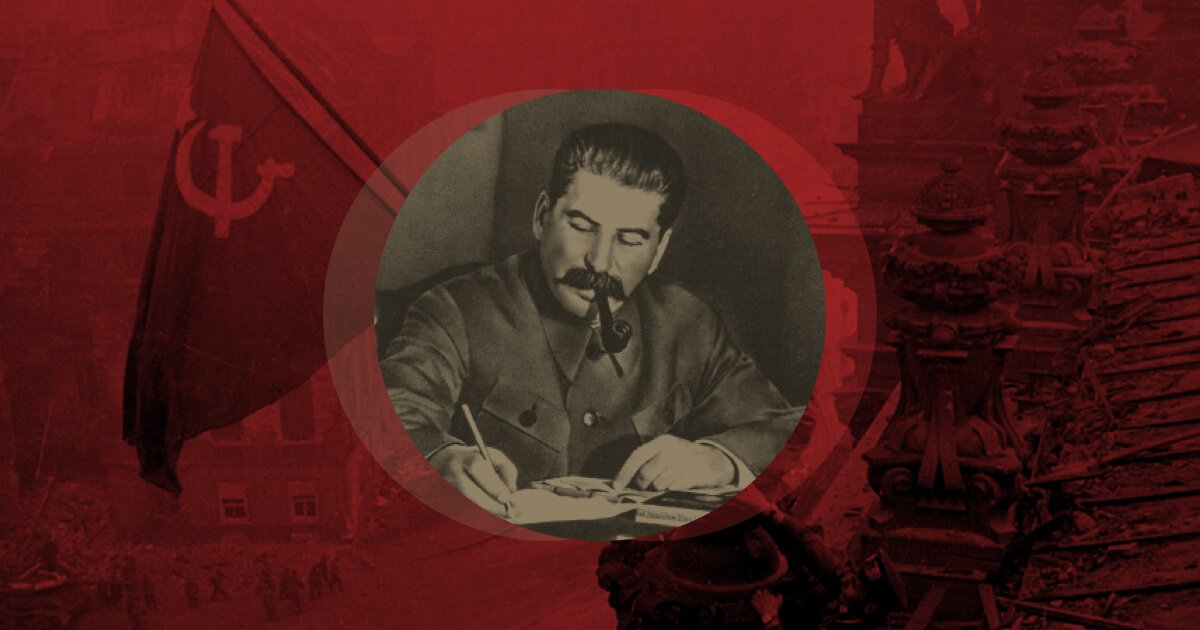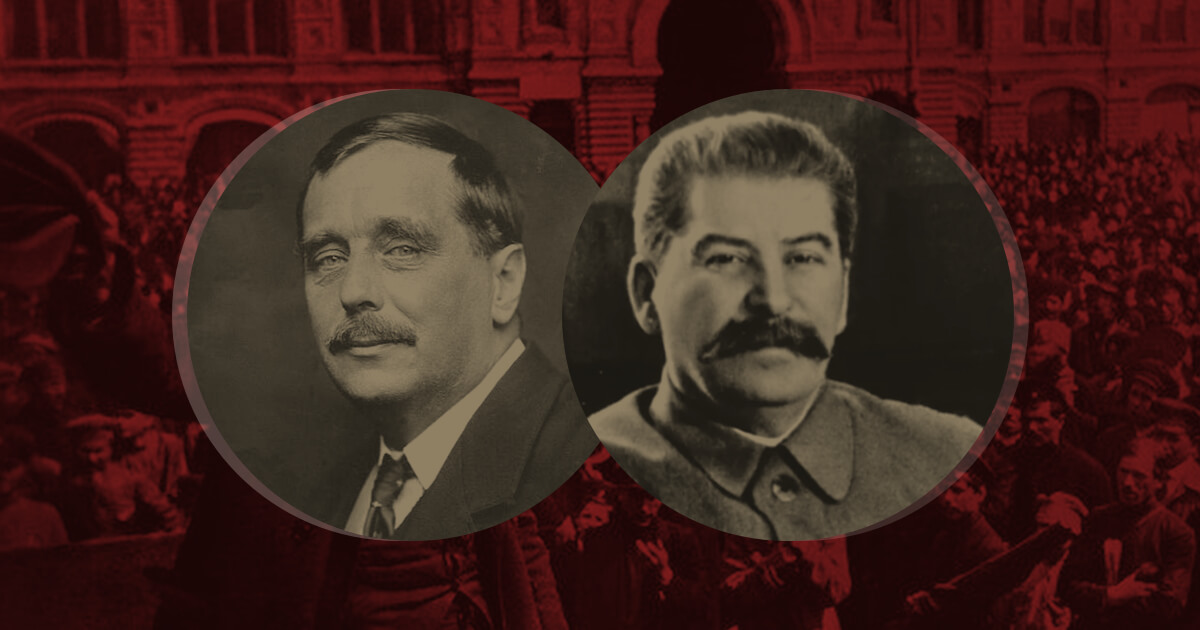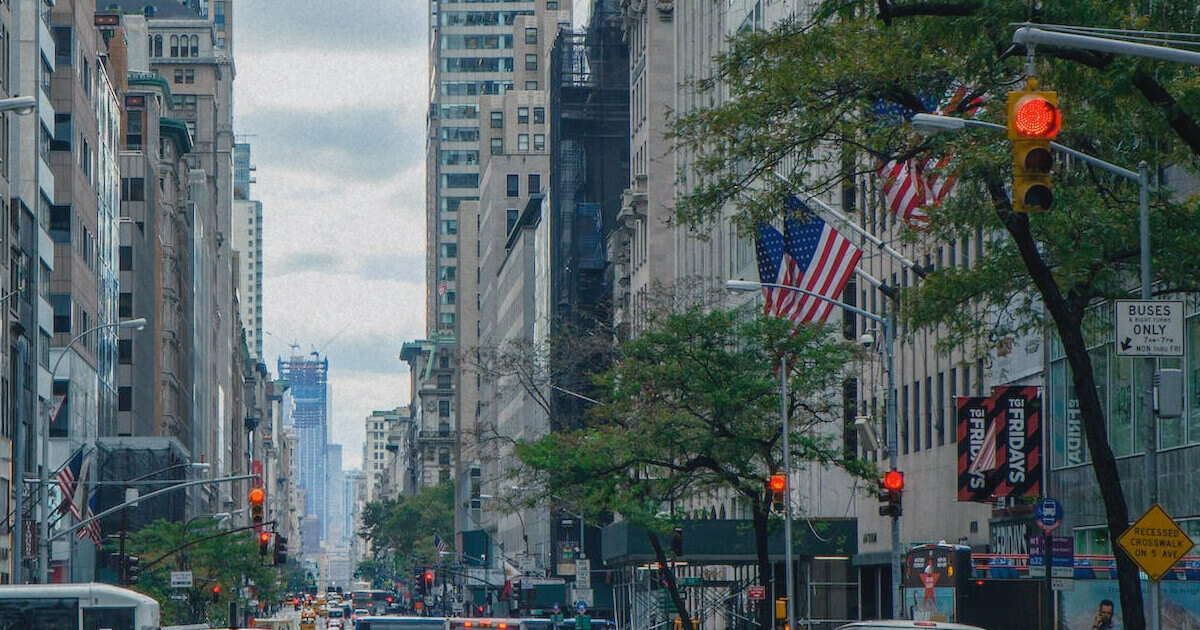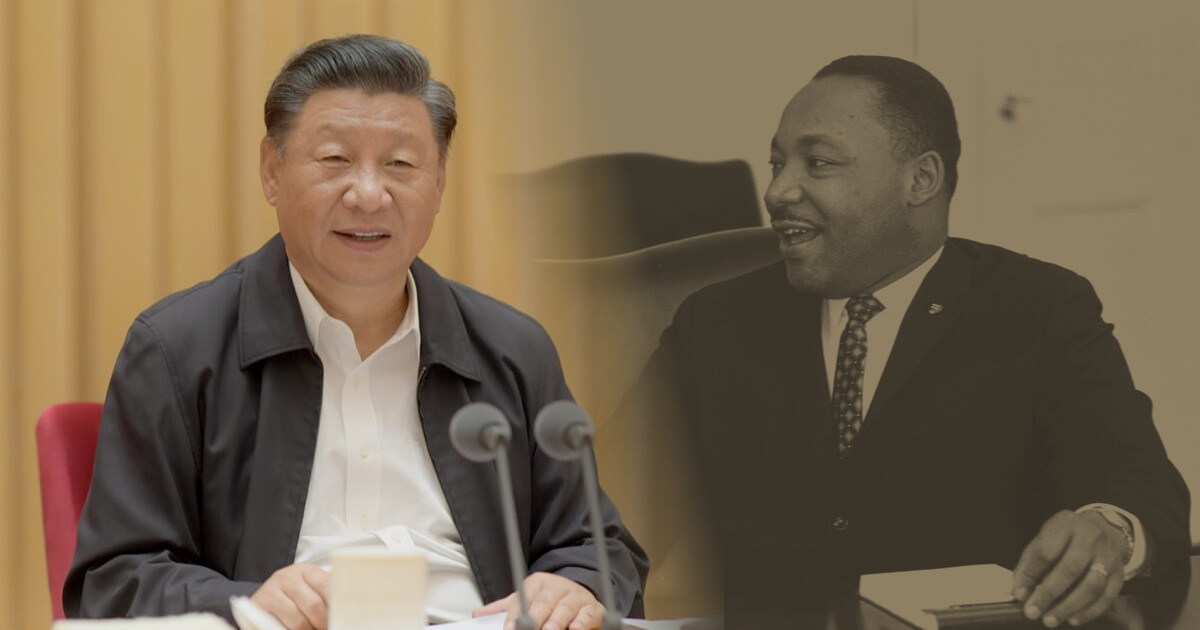In this meticulously researched exposé, KJ Noh traces the genealogy of U.S. geopolitical strategy in Asia and the Pacific, giving us an inside view of both the realpolitik of U.S. imperial expansion and the architects behind it. Concluding with an analysis of 21st century U.S. total informational warfare, Noh argues that the path to a kinetic war against China has been decades in the making. Once triggered, it could rapidly turn nuclear.
Originally republished to Qiao Collective from Popular Resistance with the author’s permission.
It was a gripping, stunning testimony. Before Congress, a 15 year old volunteer nurse, Nayirah, struggled to compose her trembling voice, barely holding back tears, as she testified that marauding soldiers had thrown babies out of incubators in a hospital, leaving them to die on the floor.
Later, Amnesty International confirmed authoritatively that 312 babies had been killed this way. 1 All the news agencies ran with the story, and the country and Congress were in a total uproar.
There was only one problem: it was completely, utterly, totally fraudulent. It was engineered, perjured, coached testimony concocted by PR experts, designed to manufacture consent for a U.S. war on Iraq.
At the time, it was also crystal clear that the claims were absurd—Kuwait had a population of less than 1.5 million at the time, and given its birth rate, would have had a few hundred premature babies a year. It’s inconceivable that over 300 of them could have been clustered in a single hospital on a single day.
Nevertheless, this was the story that was sold to the U.S. people. Representative John Porter stated, “We have never heard…[such] a record of inhumanity and brutality and sadism…I don’t know how the people of the civilized countries of this world can fail to do everything within their power to remove this scourge from the face of the earth.”
Not long afterward, the U.S. went to war with Iraq. It would wage war again, 12 years later, doubling down with even more monstrous lies about weapons of mass destruction.
Today, we are facing a similar situation: the U.S. is escalating rapidly towards a shooting war with China, and similar absurd, astonishing, and monstrous lies are being spread. In fact, the U.S. is already engaged in “multi-domain” “hybrid warfare” with China. This is warfare just below the threshold of direct military engagement. On the ground this involves:
- Economic Warfare: trade sanctions and tariff war, as well as technological warfare: attempted seizure of Chinese companies (TikTok); attacks on China’s international 5G contracts; sanctions on the primary & secondary supply chains of key sectors of Chinese industry (e.g. Huawei’s semiconductor supply chain); attacks on Ant Financial’s IPO.
- Legal Warfare, or “lawfare,” including over 380 anti-China bills in Congress, and 14 individual and state lawsuits against China for over $30 trillion in “Covid damages”; the long arm “legal” kidnapping of Huawei’s executive
- Diplomatic Warfare, including consulate shutdowns, harassment of diplomats, breaching of diplomatic pouches and compounds, and calls for regime change.
- Military Brinksmanship and posturing in the South China Sea, the East China Sea, the Taiwan straits; complete encirclement of China with strategic weapons, surveillance, and 400 offensive bases (“The Pacific Pivot”), the use of air bases in Taiwan for military surveillance, and plans to station intermediate range nuclear missiles all along China’s periphery. 2
- Civil Subversion: color revolution, urban terror, destabilization and delegitimation operations in Hong Kong (and other places where China has interests), including millions of dollars of funneled for organization & training, and encrypted communications infrastructure built to coordinate anti-government activities.
- Academic Warfare: through the FBI’s China Initiative, every 10 hours a case is opened against a Chinese student or researcher in the U.S. (currently 2700 cases) and all Chinese students are considered potential “non-traditional” “collectors” and “spies” involved in a “thousand grains of sand” collection strategy. -Information Warfare: last but not least, we are seeing total Information warfare. The stories about so-called “massive human rights abuses,” “Chinese concentration camps,” “Chinese-made-and-released Covid,” “China has harmed us economically,” “China has stolen its way to the top,” “China is oppressing independent Hong Kong,” are part of this information warfare.
This mass propaganda incites people to hate China irrationally and unconditionally, to manufacture consent for war. The U.S. military calls this information warfare, “the firehose of falsehoods” and we are all being drenched with these lies. This is necessary to justify war against an enemy and to curtail any rational discussion or questioning.
Some of the questions that the public are kept from asking are:
- Are these allegations supported by any facts?
- Has China threatened us? Is the U.S. at risk from China?
- Is this war justifiable by any means? Is it legal?
- Do the citizens of the U.S. want to go to war? Could the U.S. even fight, let alone win a war with China?
A careful, reasoned approach to these questions, would lead one to say, No.
Before we try to play whack-a-mole with the blatant war propaganda, a more useful and clarifying approach is to ask, why is the U.S. telling these lies to go to war?
For this, we have to look at history.
Why The U.S. Is At War: Culture shock and the challenge to supremacy
The earliest European travelers were astonished to discover in China a country, in many ways, far more advanced than the West: a rich, diverse, multi-cultural civilization with sophisticated systems of governance, and vibrant cities built with complex systems of planning and management. Above all, they marveled at a harmonious multi-religious, multi-ethnic society, free of sectarian strife, and an inclusive merit-based 3 system of political power that selected the most competent people to govern and rule, regardless of creed, color, background, or religion. 4 This contrasted the Western system of hereditary aristocratic rule within a society torn apart regularly with religious strife. These ideas of diversity, tolerance, inclusion, and earned—not inherited–privilege, would strongly influence the leaders of the Enlightenment, so much so that Western philosophers such as Voltaire and Leibnitz believed that the Chinese had “perfected moral science,” and that Chinese statecraft was the model for the West to emulate if it wanted to develop into an enlightened civilization.
These discoveries struck a hard blow at Christian and Western supremacy. Western colonization was built on a foundational belief that the West was more advanced, more evolved—closer to God—than the “barbarous” countries it was invading, subjugating, exploiting, and destroying. It needed at least the pretense of being more “advanced” to justify its colonial “civilizing mission.” Reactionary thinkers like Herder—who had never visited China—lashed back rapidly by propagating a theory of the depravity of Chinese: that China was an “immoral land with no honor,” an “embalmed mummy” characterized by stagnation, in contrast with Western “dynamism.”
In addition, the Chinese system of meritocratic government was deeply troubling to a West built on stratified class privilege. A civilization without hereditary aristocrats was unfathomable and terrifying to the Western ruling class. Montesquieu, (borrowing from Giovanni Botero) thus concocted the trope that China’s more egalitarian system had to be “despotic”—despotic for him because it threatened the “liberties” (aristocratic privileges) of his class. Hegel chiseled this canard into the Western consciousness with an armchair theory of “Oriental Despotism,” whereby the Chinese had failed to evolve due to inherent, characterological flaws in its people and its political culture. Marx chimed in with the “Asiatic mode of production,” and Weber and Wittfogel also reinforced it. These allegations of “despotism”—despite being total distortions of Chinese governance–have infused all Western discourses about China since.
A civilization without hereditary aristocrats was unfathomable and terrifying to the Western ruling class. Montesquieu, (borrowing from Giovanni Botero) thus concocted the trope that China’s more egalitarian system had to be “despotic”—despotic for him because it threatened the “liberties” (aristocratic privileges) of his class. These allegations of “despotism”—despite being total distortions of Chinese governance–have infused all Western discourses about China since.
Enter the Bandits
At the same time, “embalmed” Chinese “inferiority” notwithstanding, the West craved the exquisite consumer goods of China—tea, silk, porcelain—and this created huge trade imbalances. The Western response to balance the books was narco-trafficking: smuggling in industrial amounts of opium—at its peak, up to 9 million pounds a year. When China objected and opposed this on sovereign and moral grounds and confiscated the drugs, war was declared. Reparations were forced, concessions extracted, and the country plundered, looted, and destroyed. In one show of force to the Chinese, the Summer Palace of the Emperor was sacked by Lord Elgin, which Victor Hugo described thus:
There was, in a corner of the world, a wonder of the world…. All that can be begotten of the imagination…was there…. Build a dream, a dazzling cavern of human fantasy with the face of a temple and palace…. This edifice, as enormous as a city, had been built by the centuries…. This wonder has disappeared. One day two bandits entered the Summer Palace. One plundered, the other burned. All the treasures of all our cathedrals put together could not equal this formidable and splendid museum of the Orient. It contained not only masterpieces of art, but masses of jewelry…. One of the two victors filled his pockets…the other…filled his coffers. And back they came to Europe, arm in arm, laughing away. Such is the story of the two bandits [England & France].
This violence, banditry, and racism, justified by the belief in the subhuman nature of the Chinese, became normalized practice against the Chinese over two centuries, and great American fortunes—Perkins, Astor, Forbes, Cabot, Delano (Roosevelt)—and Ivy league institutions at Harvard, Yale, Princeton, Columbia were built on this extraction and narco-trafficking. Hewing to the belief that the Chinese were less than human, enterprising Euro-American drug barons pushed opium that addicted 10% of the population, essentially “roofie-ing” an entire nation and stealing its wealth. Just as U.S. Southern wealth had been built on the decimation of black bodies through the slave trade, U.S. East Coast wealth was built on the destruction of Chinese bodies through the drug trade, in what historian John K. Fairbank described as “the most long-continued and systematic international crime of modern times.”
Dehumanization, humiliation, assault, theft, rape, colonization, appropriation–these became the standard Western approach towards China and the Chinese; the Chinese people were “filthy yellow hordes,” an inferior, subhuman race, lacking agency, fit only to be colonized, exploited, enslaved, lynched, erased, and wherever possible, extinguished through race war. It would get worse.
Cold and Hot war: A Chinaman’s Chance
Inside U.S. territory itself, the mythology of “yellow peril”—originally a German colonial war trope—became pervasive. Newspaper editor Horace Greeley, argued that the Chinese were “uncivilized, unclean, and filthy beyond all conception, without any of the higher domestic or social relations; lustful and sensual in their dispositions; every female is a prostitute of the basest order.” Greeley, a progressive (who employed a young Marx as a reporter), was simply mouthing the platitudes of his day; much worse than rhetoric was the routine violence. Prefiguring similar present-day fears that Chinese were stealing jobs, wealth, or threatening America, thousands of Chinese were massacred, lynched, set on fire, expelled from their communities in the late 19th Century: in 1871, the LA Chinatown massacre, in 1880, the Denver Yellow Peril pogrom, in 1885 Wyoming Rock Springs massacre, the Issaquah Valley attack, the Arson of Seattle’s Chinatown, the Tacoma riot, in 1886 the Seattle Riot of 1886, the Oregon Hell’s Canyon massacre. “A Chinaman’s chance” became a common term: to be Chinese was to be subject to sudden death at any time at the whim of white people.
In response, the Chinese hid themselves inside ghettos where they could, fled pogroms, arson, and mass lynchings, and kept their heads down, “eating bitter” and trying to stay alive. Where they managed to settle down without being killed, they were subjected to cultural erasure, economic blockade, social isolation, a ban on owning property and businesses, and a proscription on marrying and having children, in short, planned elimination.
A minor respite during WWII, when the U.S. allied itself with the Chinese KMT (Kuomintang) against the Japanese gave a small glimmer of reprieve, as local leaders tried to establish breathing space, and the Japanese took on the role of the “bad Asians.” This lasted until the Chinese communists liberated themselves in 1949, and wrested back their own country. “China has stood up,” Mao declared, igniting jubilation throughout the third world and sending shockwaves of horror through the colonial west. This arrant act of self-liberation and self-determination—along with the U.S.’s astonishment that the monstrous KMT fascists they had courted and funded had been trounced–unleashed a hysterical new wave of Sinophobia during the McCarthy era. High-ranking Congressional committees demanded “Who lost China?”—as if it had been theirs—and purged the State Department of the moderate “China-hands,” who had been sympathetic or informed about China and its political institutions. A paroxysm of anti-China and anti-Asian hatred would shiver and fester throughout the cold war, burning, stoking and consuming itself through two hot wars (the Korean war and the Vietnam war), counterinsurgencies (Malaya), politicide (Indonesia), and smoldering on through the Nixon era, and crackling back alive to the flushed, red hot heat of the current moment.
In a country built on settler-colonial racism, this violent, racist, anti-China hatred—one of the most enduring legacies and traditions of the West—is the noxious Petri dish in which this propaganda for war is being cultured and vectored.
To this day, these stereotypes—ideological templates–are readily applied, for example, as regards Covid-19. In the Sinophobic Western press, Covid-19 is allegedly caused by dirty Chinese eating habits, dishonest cover-up, depraved indifference to life, despotic suppression of information, and dangerous intent towards the West. In a word, the Chinese are dirty, dishonest, depraved, despotic, and dangerous. Every day, these racist slanders are plastered and repeated, ad nauseam and ad infinitum, in Western outlets like The Guardian, The Washington Post, or The New York Times, and then catapulted into orbit by Twitter and Facebook. White supremacy and its attendant anti-Asian fear and hatred are some of the oldest, most enduring, most deep-rooted hatreds in the Western mind. Underneath the shallow topsoil of civility and liberal tolerance, it festers and simmers in angry, molten layers of the subconscious, quick to flare up in white-hot violence at any perceived slight or challenge to white superiority, and rapidly weaponized as political expediency requires.
Realpolitik: Opening And Closure
Miraculously, during the 70’s, a battered and bruised U.S., humbled from defeats in the Vietnam war, and seeking a realpolitik to untangle the quagmire, decided to open relations with China to counterbalance the Soviet Union. Despite over a century of hatred, and the containment of the Russians for being an “Asiatic Race,” the U.S. normalized relations with Chinese, and thus began a short, temporary, realist honeymoon, a brief respite from this race-baiting and race hatred.
This idyll was not to last. After the fall of the Soviet Union in 1989, two things became readily apparent: 1) there was no further political need to engage with China, since the primary reason (the threat of the Soviet Union) had gone away, and 2) it was clear for anyone understanding history and geography that China could become a challenger to the United States itself, due to its size, capacity, and dynamism.
Thus the long, unabated, and persistent thread of anti-China hatred—red-scare-yellow-peril-thinking, reinvigorated again with the persistent white fragility about new challenges to supremacy—came back with a vengeance. Despite continued engagement with China from the Nixon to the Clinton era, Sinophobia remained a silent, underground political force with a tremendous gravitational pull. Two groups were important in giving these forces concrete shape and form.
The Empire Strikes Back: Yoda And His Jedis
Andrew Marshall, who died last year in March, was often referred to as “Yoda.” He was the Pentagon’s Oracle, directing its secretive internal think tank, the Office of Net Assessment, for 42 years, and was top advisor to 12 Secretaries of Defense. Originally part of an elite group of econometric thinkers at RAND (Herman “Strangelove” Kahn, James Schlesinger, Daniel Ellsberg, Albert Wohlstetter), they worked on game theoretic & stochastic modeling of complex phenomena, and on how to strategize the unthinkable and the insane: how to win at nuclear Armageddon.
Throughout his long tenure at the inner sanctum, Marshall had two key obsessions: U.S. military supremacy, first against the Soviet Union, then after the fall of the USSR, against China. Post-1991, he became singularly obsessed with preventing China’s rise to power. Using a deft mixture of threat inflation (through recondite “net” assessments & heterodox “team B” reviews), classified white papers, cryptic pronouncements to the power elite, and the incessant cultivation of a cult of loyalists, Marshall kept the Pentagon’s gravy train running on time, while instilling in his followers a paranoid, “long durée” mindset of endless and moving threat inflation.
Marshall’s proteges, Wolfowitz, Cheney, Rumsfeld, Cohen, Krepinevich, Pillsbury, Herman Kahn, Richard Perle, Richard Armitage, Michael O’Hanlon, and countless other neocon heavyweights were graduates of “St. Andrew’s Prep School” or the “Church of St. Andrew,” and mentored into Marshall’s world view and strategies. These ideologues had suckled at the woozy philosophical teat of Leo Strauss (imagining they were imbibing Plato, Hegel, or Kojeve) and graduated from Ivy institutions funded from Chinese opium smuggling. Marshall fed them solid food, C-rations, and the bloody red meat that cut and sharpened their fangs for ideological and political battle.
In 1992, a fully teethed group of Marshall’s neocon protegés penned the Defense Guidance Planning (DPG) document that came to be known as the “Wolfowitz Doctrine.” A preposterous, overweening document, embarrassing upon leakage for its hubris, irrationality, and illegality, it was immediately disavowed but not discarded. A few years later, it was redacted and upgraded into the PNAC (“The Project for a New American Century”)’s Mein Kampf-like document, “Rebuilding Americas Defenses.” This was, in essence, an unhinged plan for total world domination (“unipolar global dominance”) in all domains of war (“full spectrum dominance”), unfettered by international law or any sense of proportion, rationality, or morality. Borrowing from the DPG its call for the unencumbered use of aggressive, pre-emptive war, including the use of nuclear and biological warfare, it postulated a “Pearl Harbor-like” incident to operationalize. Not long after, this doctrine became realized under Rumsfeld and Cheney, bringing us the chaos, murder, tragedy of Iraq and Afghanistan and the endless catastrophic wars of the post-Bush years.
Contemporaneously, with the Soviet Union dissolved, and the U.S. pressing NATO right up against the flank of Russia, the U.S. also began to cross-hatch the contours of a containment strategy against an emerging China, the next potential challenger to U.S. global domination.
Marshall and his Jedis began explicit, long term countermoves. Even as the Middle East continued to spiral into chaos, yet more wide-ranging and ambitious plans were hatched against the Middle Kingdom. A strategy to withdraw from the Intermediate Nuclear Forces Treaty (INF) was initially floated (and later, with the blessing of the CFR, circulated, and eventually implemented). Aggressive forward bases were planned in the early 2000’s, then built in East Asia along the first island chain, placing deadly and destabilizing strategic weaponry right up against China’s throat and belly. New alliances and strategies were drawn up, and old alliances reinforced and rekindled, and a dangerously empire-nostalgic Japan was enabled in erasing history and remilitarizing to the hilt as the spear tip against China. Eventually, as all these pieces fell into place, Hillary Clinton would stage the coming out party: the declaration in 2011, of the “Pacific Pivot/Pivot to Asia” in Foreign Policy Magazine. Clinton’s debutante declaration was a dog-whistle marvel of cant and obfuscation. A plan to move 60% of U.S. firepower to encircle and contain China through bases, weaponry, and alliances, while engaging in multi-domain hybrid warfare, was sold as a “historical rebalancing.” With the blessing of Obama’s cabinet, Marshall’s China threat was finally getting policy primetime.
During this time, another of Marshall’s busy, brainy proteges, military officer Andrew Krepinevich, started to work out the nuts and bolts of actual war with China. At the CSBA (Center for Strategic Budgetary Assessment), Krepinevich, under Marshall’s guidance and funding, wrote out the details of the war doctrine against China, “AirSea Battle”—a China-directed counterpart to the Soviet-era “AirLand Battle”—involving decapitating and blinding strikes deep into Chinese territory, and instantiating Marshall’s “revolution in military affairs” for U.S. supremacy in the Western Pacific theater of war. RAND and the CFR chimed in, rendering into granular and global detail the strategies and order of battle.
Another of Andrew’s powerful proteges was Michael Pillsbury. A serious operator, Pillsbury had assisted in the creation of the regime change “governmental” NGO known as the NED, the weaponization of the Mujahideen in Afghanistan, the implementation of politicide in Latin America (known as the Reagan Doctrine), but most importantly, he was credited with initiating the idea of the “China card” in 1973. Under the good offices of Marshall, Pillsbury published a book called “The Hundred Year Marathon,” scripting a fact-free document of paranoid threat inflation, racist scare-mongering, and orientalist slander that is now standard China doctrine. In an alphabetic royal flush of Sinophobes (Lighthizer-Mnuchin-Navarro-O’Brien-Pillsbury-Pompeo-Pence-Ross), Pillsbury was the most important “China authority” of Everything Under the Heavens in the Trump Kingdom of Sinophobia.
China Syndrome: Blue team, Red Peril
As the original U.S. reason for allying with Beijing—to counterbalance Moscow—became moot, another group of China-bashers, far-right ideologues with sharp axes to grind from the Cold War also began to crawl out of the cracks. Calling themselves the “blue team” or “panda sluggers,” they derided the U.S. “panda-hugging” business class who wanted continued engagement with China, seeing China only as a mortal and irreconcilable communist threat. During the Clinton administration, they formed a loose coalition, coming together with funding under PNAC, using the Washington Times and Weekly Standard as their platforms. Although the “Blue Team” had no official members, published no formal policy statements, and had no offices—initially meeting in a garage, then at the Tabard Inn on N Street—they included key Congress members and staff, think tankers, journalists, and lobbyists.
Among them, former CIA analyst William C. Triplet and congressional staffer Edward Timperlake went on to write a lurid series of conspiracy books alleging quid-pro-quo between Clinton and China (Year of the Rat; Red Dragon Rising). This was a bizarro world where Taiwanese lobbyists with Chinese Mafia connections were acting as agents for the PRC government and manipulating the White House. They also alleged Chinese theft of military secrets, slave labor, the proliferation of WMD to Iran and other “rogue” states, and insinuated that Clinton’s “constructive engagement” was knowingly undermining the U.S. for the benefit of the Chinese. These allegations put into ink a conspiratorial mythology about a dangerous, corrupt, and belligerent China, echoes that fed into an existing subterranean current of paranoid lies about China.
These “blue team” members, cross-pollinating with Marshall’s proteges, were a rogues gallery of high-powered political operators: Michael Ledeen, Frank Gaffney, Robert Kagan, Bill Kristol, Michael Pillsbury, Bill Gertz, Gary Bauer, Peter Navarro, Elliot Abrams, Richard Scaiffe, John Bolton were among those listed as “members.” Dana Rohrabacher, Tom DeLay, Nancy Pelosi, Robert Byrd were also considered to be fellow travelers.
These people built powerful commissions and institutions focused on attacking China, including the Congressional Executive Commission on China (CECC), the US-China Security Review Commission. The Taiwan Security Enhancement Act was also written during this time. In particular, the CECC appointed itself watchdog of Chinese trade, technology, labor and human rights, saturating Congress with an unending “blue team” litany of Chinese “abuses.”
The most virulent and extreme of all these China hawks was Frank Gaffney, who recycled the alarmist Cold War group, “Committee on the Present Danger,” into the current “Committee on the Present Danger: China,” contending that “there is no hope of coexistence with China.” Gaffney’s ideology and guiding principles coincide with official positions on China and key U.S. foreign policy; moreover, Secretary of State Mike Pompeo’s speech and actions on China reflect his close affiliation and affinity with Gaffney.
What the Pivot is: the Geostrategy of China-bashing
Much of the “blue team’s” ideology and theorizing followed pre-existing currents of ideological posturing and hate-speech but have incorporated sharper geopolitical and geo-economic dimensions.
Western history can be seen as having several inflection points: one was 1492, the advent of the “Columbian Era.” The Columbian era is the era of sea-faring, sea-power-based Western colonial and imperial empires. The demise of the Columbian era was foreshadowed by an Oxford geographer in 1904 who put forth what is now known as the “Heartland Theory.” In a nutshell, it is a land-based theory of power that predicts the end of sea-based powers: “Who rules East Europe (Eurasia) commands the Heartland; who rules the Heartland commands the World-Island; who rules the World-Island commands the world.” It also concluded that “Were the Chinese [to] conquer its territory [of the Russian Empire], they might constitute the yellow peril to the world’s freedom.” This maxim and the anxiety it provoked was red-lined in Brezinski’s “Grand Chess game”: “No Eurasian challenger should emerge that can dominate Eurasia and thus also challenge U.S. global pre-eminence.”
In 1992, Marshall’s protégé, Paul Wolfowitz formulated the above strands into a formal doctrine, in the above mentioned DPG (Defense Planning guidance) document:
Our first objective is to prevent the re-emergence of a new rival…that poses a threat on the order of that posed formerly by the Soviet Union…to prevent any hostile power from dominating a region to generate global power…. The U.S. must…protect a new order that [convinces] potential competitors that they need not aspire to a greater role or pursue a more aggressive posture to protect their legitimate interests. In non-defense areas, we must…discourage them from challenging our leadership or seeking to overturn the established political and economic order. We must maintain the mechanism for deterring potential competitors from even aspiring to a larger regional or global role.
This can be better understood by looking at a map:
This is a map of the world, drawn from a topologist’s eye. It shows relationships, not distances or area. From this map you can note the following things:
- China has more borders than any other country in the world. This also gives it the possibility of connecting with more countries than any other.
- Blue lines/corridors are oceans: The top two thirds is the “world island” or “pivot state”–it contains most of the world’s population, resources, and wealth, and it can be connected as a single entity through overland routes or short ocean hops.
- The bottom is the Americas. It is topologically isolated from the world island. As sea lane control becomes less important, it will also lose prominence and relative power if the world island unifies. It’s clear that unifying power will probably arise in China, whose overland paths using high-speed rail, roads, pipelines, and ports can be easily built and connected, in a “new silk road.”
- The U.S. needs to fracture the world island to maintain its global power. If you color in the places where China is encircled, or where the US is waging war/fracturing societies/creating chaos, this is exactly where the fault lines of the global conflict are, and reveal what U.S. strategy is.
Here is a second map:
The U.S. has actually surrounded China with 400 military bases, bristling with strategic and tactical weaponry. It also has war-gamed out China’s key vulnerability: the chokepoint of the South China Sea. War in the South China Sea would disrupt $5.3 Trillion of China’s external trade and 77% of China’s oil imports. 5 In this scenario, the U.S. does not have to win a shooting war with China in the South China Sea. The war just has to happen, and the disruption to trade could crash China’s economy. The map shows the shipping lanes that would be disrupted. China’s first response to the U.S. pivot and encirclement, especially in the South China Sea—its key choke point—was to build defensive military facilities along some of the islands, to deter U..S incursion and to raise the cost of interference. Its other, much more ambitious response was the Belt & Road Initiative (BRI), which constitutes a long overland escape from the encirclement, similar to its “long march” during its encirclement by the fascist KMT. The BRI travels through Southeast Asia, then overland through Central Asia, to the Mediterranean, and then Europe and Africa. In particular:
- CMEC (China-Myanmar Economic Corridor) travels through Rakhine State and exits to the Indian Ocean at Kyaukphyu port (bypassing the Strait of Malacca).
- CPEC (China-Pakistan Economic Corridor) to Gwadar port transits directly to the Arabian Sea and the Persian Gulf.
- Xinjiang is the key overland route for BRI to exit China to Central Asia, with Iran also a key node.
- Djibouti at the horn of Africa is the entry node to Africa (the Sahel, and the South)
As it does this, BRI becomes the physical realization of Mackinder’s “heartland” in Eurasia—the “pivot state” connecting the “world island” into a single economic bloc and raising China to the status of the key regional power, accomplishing exactly what Brezinski and Wolfowitz sought to prevent.
Mindful of this development, and aware of the rapidly ticking biological clock on U.S. power, the U.S. is currently rapidly escalating hostilities in the South China Sea (SCS), most recently with war games, U2 incursions, belligerent passages of aircraft carriers, guided missile destroyers, submarines. China’s response has been to launch “carrier killer” missiles into the region.
Until recently, the U.S. claimed that it was not an interested party to the SCS, just that it was concerned about “Freedom of Navigation.” Now it is openly taking about blockade and strangulation of China and outright piracy against Chinese ships through media proxies.
It has also recently conducted drone war exercises for assaulting islands in the South China Sea, with down-to-the-smallest detail precision and preparation.
The U.S. is also going directly after the BRI. It is sanctioning the Chinese companies alleged to have done construction in the SCS (all the claimants have done construction, including building airfields; China is not unique). These companies are also involved in construction of the BRI; for example, China Communications Construction Company (CCCC) alone is reportedly involved in 923 projects in 157 countries. U.S. sanctions are an explicit attempt to dismantle the BRI. Likewise, the “Five Eyes” have made moves to block other “road” of the BRI, its accompanying “digital silk road” (communications-5G-blockchain infrastructure). This is yet another of the reasons why Huawei has been targeted for destruction.
The U.S. is also in the process of stationing intermediate range missiles all across the South China Sea, and around the first island chain surrounding China, as well as attempting to press gang South Korea into hosting them. This is yet another layer of dangerous escalation, and it will prove to be very, very destabilizing.
Twilight of Capitalism
The final dimension to the U.S.-China competition is economic: this is the uncanny fact that China’s “Socialism with Chinese Characteristics” works and outclasses Western neoliberal capitalism by leaps and bounds. In terms of developing an economy, raising living standards, creating public wealth, serving and meeting its people’s needs, and dealing with crises, China beats the capitalist West hands down.
Even as they claimed that such a state-led economy could never compete against the superior free-market economy of the U.S., the Trump administration has insistently demanded that China dismantle their planned economy in trade negotiations, because of its superior advantages over capitalism.
This was not supposed to be: Clintonite “Panda Huggers” had always justified, hubristically, that their engagement with China would result in China’s liberalization and total transformation—the inevitable, inexorable result of engaging with a superior Western political ideology and economic system. They also insisted that if China continued as it had with its planned economy and ”autocratic“ ways in a modern era, it would simply fail: it would end up like the Soviet Union or North Korea—it had no choice but to become more Western, more neoliberal, more capitalist. But a funny thing happened on the way to the market.
China built a system that has brought more than 850 million people out of poverty in a few short decades, ended domestic extreme poverty in 2020, and has already surpassed the U.S. in PPP economy size and healthy life expectancy.
China’s thriving, effective Central government—with a 93.1% approval rate—breaks all Western conceptions of development, governance, legitimacy, and of course, superiority.
With 80% of its top leadership scientists or engineers, China also outranks the U.S. in patents filed, top scientific papers published, and is a world leader in fields such as AI, robotics, quantum computing, 5G, highspeed rail, advanced industrial production, next generation IT, materials science, and sustainable energy development, low-carbon eco-cities, and reforestation. It has also pledged to go carbon neutral by 2060, essentially giving the world an outside chance to still beat global warming—despite being a historical carbon creditor. With its scientific leadership, whole-of-society public health strategies, and its valuing of every human life, it has also shown that it can organize to defeat a mass pandemic in weeks—and by overriding capitalist markets whenever and wherever it sees fit.
Meanwhile the U.S. still struggles with the largest number of cases and deaths from Covid-19—a death rate 200 times that of China’s—and is incapable of preventing Covid-19 among its own top leadership. To boot, first in 2008, and then in 2020, the U.S. neoliberal capitalist economy was shown up to be a jacked-up deck of cards, rescued only by massive Chinese debt-purchasing and endless printing of fiat money.
In contrast, China has demonstrated that it has developed an alternative, non-Western, non-capitalist model of development—without war, invasion, colonization, slavery, regime change, primitive accumulation—that the world can emulate and follow.
Once you realize that, you understand why the U.S. ruling classes are so desperate to erase China and its example: China offers a threatening alternative model of development that is non-capitalist, non-Western, and non-colonial. As such, it undermines the West’s neocolonial domination of the Third World and its debt-trap-based forced underdevelopment, subservience, and expropriation. It also offers a model of state-led ecological development. All this signals new possibilities of hope and transformation for the world. The ruling classes in the West will go to war to prevent this.
Where Does This All End?
Despite China’s assurances that it does not want war, hot or cold, that it seeks win-win cooperation and co-existence with all countries, and that it disdains hegemony, the U.S. continually escalates, provokes, and threatens China, all the while dismantling off-ramps channels of communication and global institutions for cooperation and de-escalation.
The conclusion to draw is hard, but obvious: if things continue as they have, this can only lead to direct military confrontation and kinetic war.
Doubling down on racism, sexism, capitalism, and militarism, the Democratic regime not only silences demands for viable reform and abolition by the Sandernistas, BLM, and Me Too, but also ignores the non-interventionist, peace-demanding wishes of the majority of voters, dismissing their demands for a better system and less violent foreign policy.
Biden’s doctrine toward China will be a continuation of the noxious arc of history and planning begun by Marshall in the late 1970s. The think tank advising Biden on foreign policy, CNAS, a near-rhyming clone to PNAC, has grandfathered in most of existing anti-China doctrine, and has mapped out in obsessive detail, the next steps of a highly destructive and dangerous strategy of confrontation with China. The key difference is that Biden’s regime will “unite” countries more skillfully against China, pivot away from Trump’s neomercantilism towards a more “globalist” approach, and likely implement some revised version of the TPP, the 12 nation economic bloc against China.
Here are some key points to understand:
- Escalation to war is bipartisan: there is no lesser evil here. The racist, capitalist, imperial ruling classes cannot and will not tolerate a rising or equal China in a multi-polar world. They would rather see the end of the world than an end to capitalism or white supremacy.
- One subset of this group believes that they can actually win a war against China, or at the very least force its subjugation to the U.S. This submission will not happen, given the actual balance of forces and Chinese determination to resist.
- The U.S. wants global supremacy but if the ruling class can’t have ordered supremacy, they are not averse to global disintegration and chaos. Proteges of Hayek and Leo Strauss, they thrive on “revolutionary disorder.” One fallback model of U.S. supremacy is to plunge the rest of the world back into the dark ages through hybrid warfare—while the U.S. controls the key systems of communication, information, surveillance, finance, rent extraction, along with the corridors of maritime transport.
- There is a third group of elite hawks who are millenarian Christians. Although a minority, they hold powerful positions. These believe in the salvation and rapture of the faithful as existing “contradictions” are heightened into Armageddon. These are religious zealots with no brakes or constraints on their appetite for war.
- War, if it happens, could rapidly turn nuclear. The U.S. no longer has “overmatch” in conventional weapons, and no longer subscribes to deterrence. Instead, its declaratory policy allows nuclear weapons to be used against “significant non-nuclear strategic attacks.” 6 Since the 2002 Nuclear Posture Review, the U.S. has explicitly prepared for nuclear war with China, and threatens “intolerable damage” in response to “non-nuclear or nuclear aggression.” 7 The Chinese have disavowed nuclear first strike—their nuclear capacity is currently minimal and purely defensive—but in case of war the US military could easily resort to the use of low-yield nuclear weapons or even decapitating nuclear first strikes 8 to overcome its conventional weaknesses. China’s deterrence would then have to shift to “hair trigger,” “launch on warning.” This means that war could rapidly escalate to large scale nuclear strikes, which many scientists predict would result in nuclear winter, dooming most forms of organic life on the planet.
- Modern “democracies” require constant media manipulation and propaganda, to manufacture consent for war. As a result, we are living in time of total deceit, as Orwell put it: “Every war when it comes, or before it comes, is represented not as a war but as an act of self-defense against a homicidal maniac…. Political language…is designed to make lies sound truthful and murder respectable, and to give an appearance of solidity to pure wind.” William Casey, CIA director summarized this succinctly: “We’ll know when our disinformation program is complete when everything the American public believes is false.” 9
What Then, Is To Be Done?
Our work is cut out for us: “In war, the first casualty is truth.” Our task is to prevent the first casualty, challenge the lies; the second, to organize and work for peace.
As we approach elections, the possibility of an October surprise increases. Remember:
- Information war precedes, justifies, and enables kinetic war, therefore you must think critically and defensively; do not take anything attacking China at face value.
- Evaluate everything for a) source b) logic, sense, rationality c) bracket & evaluate emotional triggers or trigger words d) look at counter-evidence/arguments
- Make your own judgments, draw your own conclusions: seek truth from facts
Don’t be fooled by the engineering of “truthiness”:
Stories and lies seem credible when they are 1) repeated incessantly 2) resemble pre-existing stories (especially ones that are projected from our own disowned flaws), 3) have some tiny grain of plausibility mixed in 4) seem coherent or manufacture coherence through multiple sources, and 5) tug at your heartstrings.
This means that we have to:
- Watch out for memes and repetition: watch out for stories that seem self-replicating, self-distributing, repetitive, and create an echo chamber—qualities that make them seem real and convincing even when they are lies. Even debunked stories serve as compost for more lies. Remember also that U.S. social media is handmaiden to the war machine—the worst is Twitter 10 —it promotes war propaganda and routinely purges counter-narratives.
- Distinguish the coherence and validation of a story that has multiple sources of verification from planted-and-echo-chambered-stories (for example, anything about China connected to WUC (World Uyghur Congress)-Adrian Zenz–ASPI-Nathan Ruser-nexus; the Lausan-Jacobin-Nation-DemocracyNow-tendency; or The Guardian-NYTimes-Washington Post-CFR-cabal or other combinations thereof). Outlets like these are not channels of independent verification; they are often a set of single sourced memes skillfully distributed out and repeated through different channels, part of the fire hose 11 strategy of war propaganda.
- Watch out for emotional trigger words: “genocide,” “slavery,” “concentration camp,” “trafficking,” “sterilization,” “theft/IP theft,” “espionage,” “cyber warfare,” attributed without any proof. These are trigger words designed to bypass critical evaluation, appealing to your emotions: fear, pity, and outrage.
- Watch out for projection and gaslighting: the U.S. has a long history of slave and prison slave labor 12, of Third World debt-traps, of mistreating/torturing/killing Muslims, of genociding Indigenous peoples, of mass incarceration, of police brutality, of cultural genocide, mass sterilization, medical testing without consent 13. If you see these words or allegations alleged against China, especially in a context where it makes no sense, evaluate [14] whether it seems real because there is actual proof, or because it is a convenient projection of the U.S./West’s own disowned violence, criminality, and brutality.
- Speak up and simply call out the propaganda for what it is: lies to enable war and war-profiteering. But don’t get trapped in the weeds of debunking—they will spread a 1000 new lies before you’ve refuted a single one: “Don’t expect to counter the firehose of falsehood with the squirt gun of truth”—cut it off at the root.
- Do not allow yourself to be silenced. Be prepared to be criticized as a “human rights denier.” Not having truth on their side, this is what the worst human rights abusers will always resort to: shut the fuck up or else. Don’t be intimated, and don’t let them silence you. Make your voice heard!
- Last but not least, organize! Despair is not an option! The following are good places to start:
https://peacepivot.org/
https://www.codepink.org/china
https://www.nocoldwar.org/
https://www.popularresistance.org/tag/china/
This article was written with gratitude for the memory and inspiration of Kevin Zeese, a tireless fighter for truth, peace, and justice. Many thanks also to John Pilger for his kind feedback and encouragement.
Footnotes
- Amnesty International Iraq/Occupied Kuwait Human Rights Violations, MDE 14/16/90: p56 [amnesty.org]
- For a possible missile placement map, see Barrie, Elleman, Nouwens: The End of the Intermediate-range Nuclear Forces Treaty: Implications for Asia, P31 Map 2.2 [iis.org]
- For example, the German Jesuit Missionary, Adam Schall was appointed to high bureaucratic office in the court of the Ching Dynasty
- Du Halde, Jean-Baptiste (1741), Brookes, Richard (ed.), The General History of China, 3rd ed., Vols. I, II, III, & IV, London: J. Watts. Du Halde, Jean-Baptiste (1735), Description Geographique, Historique, Chronologique, Politique, et Physique de l’Empire de la Chine et de la Tartarie Chinoise [A Geographical, Historical, Chronological, Political, and Physical Description of the Empire of China and of Chinese Tartary], Vol. I, II, III, & IV, Paris: P.-G. le Mercier.
- Department of Defense China Military Power Report, p133 [defense.gov]
- 2018 US Nuclear Posture Review, p21. [defense.gov]
- 2018 US Nuclear Posture Review, p32. [defense.gov]
- 2018 US Nuclear Posture Review, pp54-55 [defense.gov] Also, Chinese PLA assessment: [81.cn]
- Ray McGovern, Russia Gate’s Last Gasp, Consortium News [consortiumnews.com]
- As news of horrific assaults by HK rioters on journalists spread through the mediasphere on June 12th, within hours, Twitter shut down 170,000 accounts on the ground that they were “promoting narratives favorable to the CPC”: [twitter.com] According to the Guardian, “The major themes of the tweets were that that Hong Kong protesters were violent, and the US was interfering with the protests; accusations about Guo; the Taiwan election; and praise of China’s response to the Covid-19 pandemic”—which turned out to be true. Twitter coordinates with ASPI, a key source of anti-China propaganda.
- RAND offers a good analysis of this technique here, although it fails to mention that this is what is being used against China by the West: [rand.org]
- For example, ASPI makes unfounded allegations of Chinese slave labor while being funded by US corporations that are confirmed to use US prison slave labor
- For example, the NY Times concocted an article on “non-consensual” Chinese vaccine testing, which doesn’t hold up to any scrutiny. Among other things, it confounds the risk profiles of Western m-RNA & ADV-vectored vaccines that have never been approved for human use, with the time-tested inactivated vaccines that the Chinese are using.








